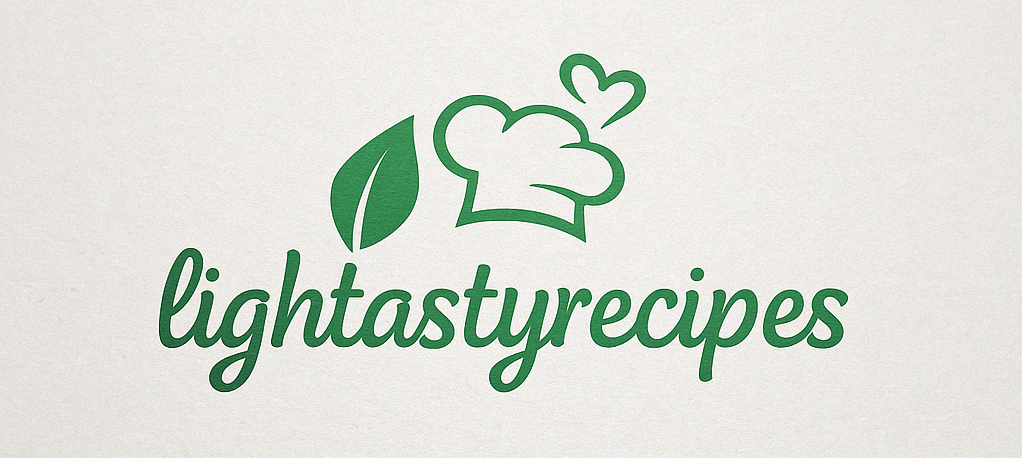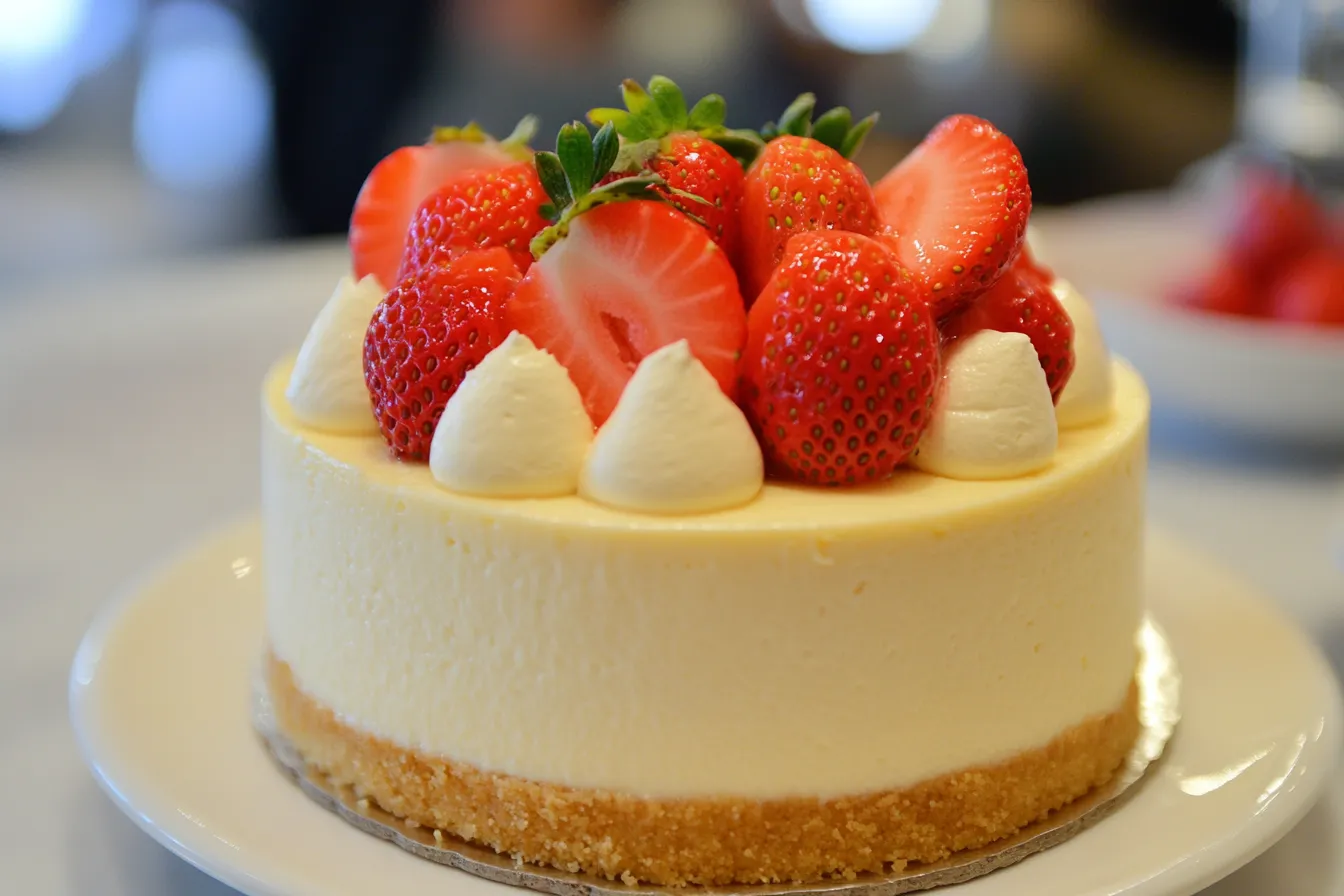Is there anything more satisfying than sinking your fork into a smooth, creamy slice of cheesecake? 🍰 It’s rich, it’s luscious, and it’s one of those desserts that feels fancy but is actually super doable at home. Whether you love it classic New York-style or loaded with chocolate and berries, cheesecake has a way of making every occasion extra special. Ready to master it? Let’s dive into everything you need to know about creating the cheesecake of your dreams!
« Cheesecake isn’t just dessert — it’s pure edible happiness. » 🍰✨
Why Everyone Loves Cheesecake
A Timeless Classic Loved Worldwide
From the bustling streets of New York to cozy bakeries in Paris, cheesecake is adored all over the world. Some historians even say the Greeks served cheesecake to athletes at the first Olympic Games — talk about legendary! Over time, the recipe has traveled, evolved, and captured hearts everywhere.
Endless Flavors, Endless Joy
The best thing about cheesecake? It’s endlessly customizable. Classic vanilla? Yes. Chocolate swirl? Definitely. Fresh strawberry topping? Oh yeah! You can even make mini cheesecakes, no-bake cheesecakes, or wild combos like peanut butter-chocolate. Whatever your flavor fantasy, cheesecake can handle it. 🎂
Essential Ingredients for a Perfect Cheesecake

Making a cheesecake doesn’t mean you need a pantry full of weird stuff. You only need a few key ingredients to make magic happen!
Cream Cheese: The Star of the Show
Cream cheese is what makes cheesecake, well, cheesecake! Always go for full-fat, block-style cream cheese (not the spreadable kind in a tub). Trust me, it makes a huge difference in texture and taste.
Eggs and Sugar: Binding and Sweetness
Eggs help set the cheesecake so it’s rich and sliceable, while sugar adds that essential sweetness. The trick? Don’t overbeat your eggs — gentle mixing keeps your cheesecake silky, not spongy.
Crust Options: Graham Cracker, Oreo, or Biscoff?
The crust is the cheesecake’s comfy little bed. Classic graham cracker crust is amazing, but Oreos or Biscoff cookies make fantastic variations if you want to switch things up. No matter which you pick, the buttery, crumbly crust is the perfect contrast to that smooth filling. 🧈🍪
Ingredient Table: Classic New York Cheesecake
| Ingredient | Quantity |
|---|---|
| Graham cracker crumbs | 1 and 1/2 cups |
| Butter (melted) | 5 tablespoons |
| Cream cheese (full-fat, room temperature) | 24 ounces (about 3 blocks) |
| Granulated sugar | 1 cup |
| Eggs (large, room temperature) | 3 |
| Sour cream | 1 cup |
| Vanilla extract | 1 tablespoon |
| Salt | 1/4 teaspoon |
« Good cheesecake starts with great ingredients—and a little extra love. » 💛
Step-by-Step Guide to Baking the Perfect Cheesecake
Making cheesecake might sound fancy, but once you break it down, it’s as easy as pie — actually, easier! 🍰 Let’s walk through each step so you feel like a total pro.
Preparing the Perfect Crust
Start by mixing your graham cracker crumbs and melted butter. Stir until the crumbs are evenly moistened, like wet sand. Press this mixture into the bottom of your springform pan (and slightly up the sides if you like!). Bake it for about 8–10 minutes at 325°F (160°C) to set the crust. That way, it stays crisp even under all that creamy filling!
Mixing the Creamy Filling
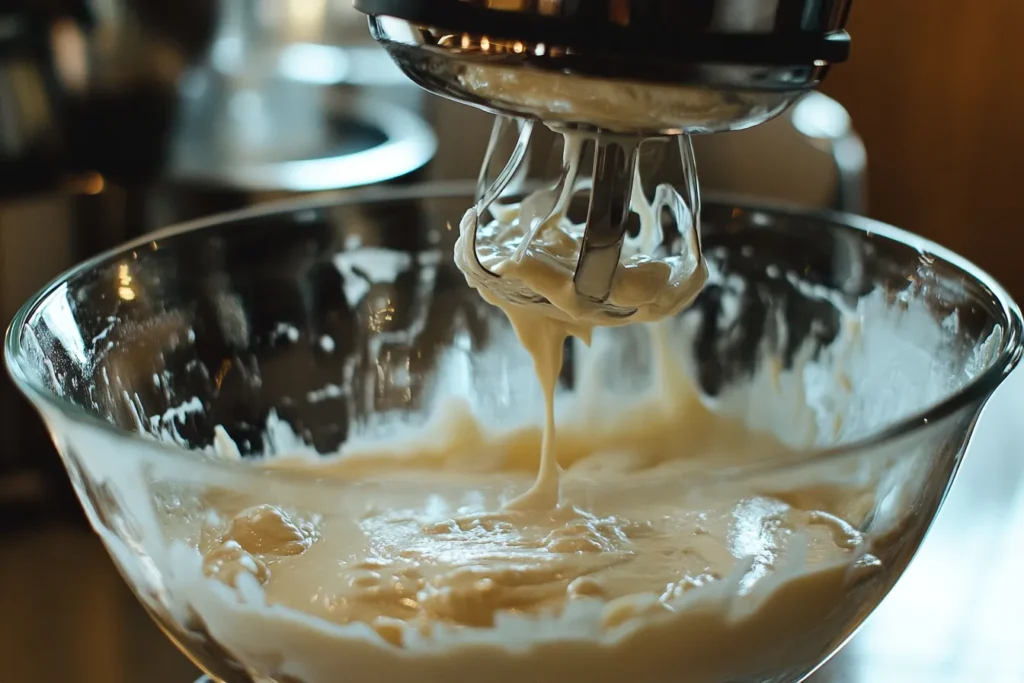
Here’s where the magic happens! Beat your cream cheese until it’s super smooth and creamy. Then add sugar, one egg at a time, sour cream, vanilla, and a pinch of salt. Mix on low speed to avoid adding too much air (bubbles = cracks). The goal is silky, dreamy batter.
- Tip: Always scrape down the sides of your bowl to make sure everything gets evenly mixed!
Baking with a Water Bath for Silky Texture
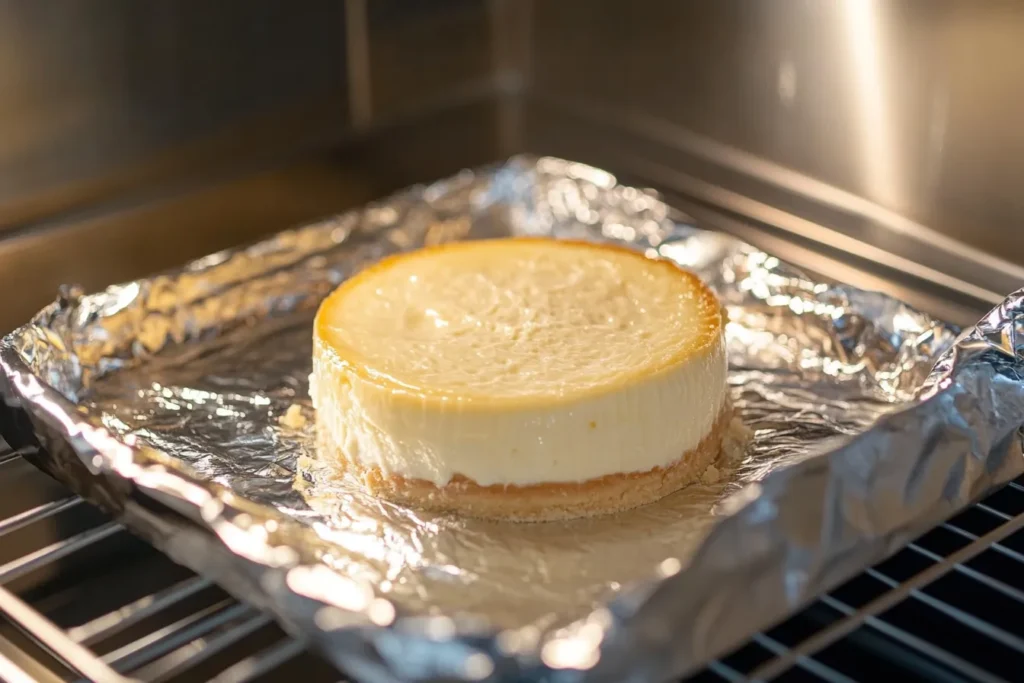
Ever seen cheesecakes with big ugly cracks? 😭 That happens when they bake too fast or unevenly. A water bath (also called a « bain-marie ») is your secret weapon. Wrap the outside of your springform pan with aluminum foil to prevent leaks, place it in a large roasting pan, and pour hot water halfway up the sides. Bake low and slow at 325°F for the creamiest texture!
« Cheesecake loves gentle heat and a cozy water bath — just like a spa day! » 🧖♀️🍰
Common Cheesecake Problems and Easy Fixes
Why Did My Cheesecake Crack?

Cracks usually happen when the cheesecake bakes too quickly, the batter is overmixed, or it cools too fast.
✅ Fix: Always use a water bath, mix gently on low speed, and cool the cheesecake slowly by leaving it in the oven (turned off) with the door cracked open for about an hour after baking.
Why Is My Cheesecake Grainy Instead of Smooth?
A grainy texture often means your cream cheese wasn’t fully softened or wasn’t mixed enough before adding the eggs.
✅ Fix: Always let your cream cheese come to room temperature first, and beat it until completely smooth before adding anything else.
How to Avoid a Soggy Crust
If your crust turns soggy, it’s usually because water from the water bath leaked into the pan.
✅ Fix: Double-wrap your springform pan in heavy-duty foil or use a silicone baking wrap to keep water out. Also, prebake the crust for extra crunch!
« In the world of cheesecake, patience + low heat + water bath = pure, creamy success. » 🔥💧🍰
Pro Tips for Cheesecake Success
Room Temperature Ingredients Are Key
Always bring your cream cheese, eggs, and sour cream to room temperature before mixing. Cold ingredients don’t blend well and can leave lumps. Warm ingredients = silky-smooth batter. ✨
Cooling Slowly for a Perfect Texture
After baking, don’t rush the cooling process! A slow cool down helps the cheesecake set properly and prevents cracks. Leave it in the oven (turned off) with the door slightly open for about an hour before moving it to the fridge.
« Cheesecake is a dessert that rewards patience — slow and steady wins the creamy race! » 🐢🍰
Delicious Cheesecake Variations to Try
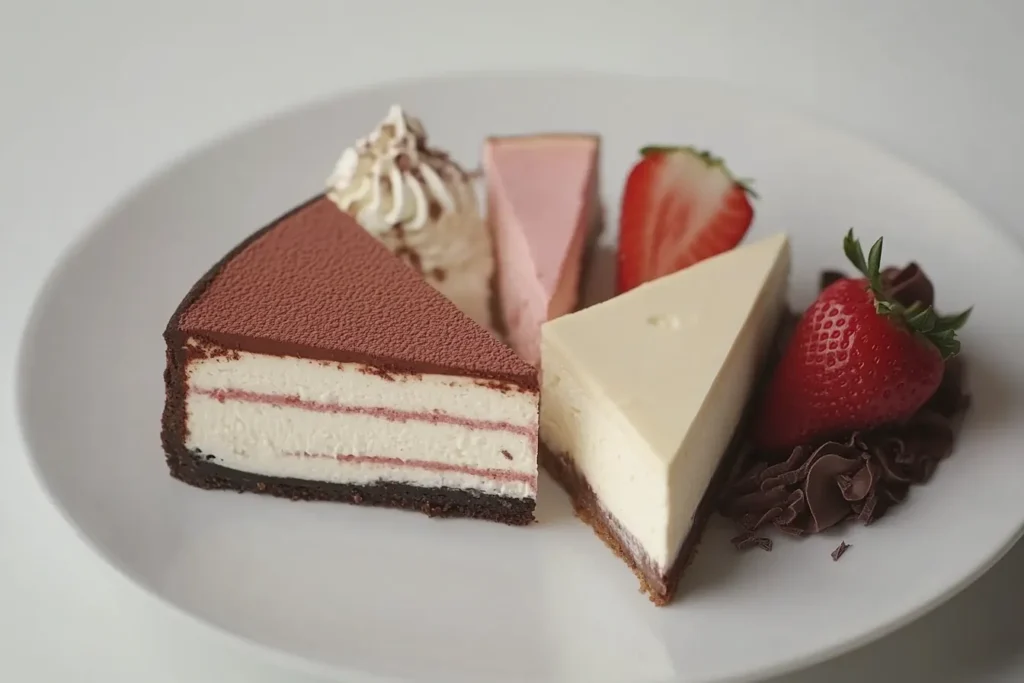
Chocolate Swirl Cheesecake
After pouring the plain batter into the crust, drizzle melted chocolate on top and use a knife to swirl it around before baking. 🍫 Instant chocolate marble beauty!
Strawberry Topped Cheesecake
Top your chilled cheesecake with fresh strawberries and a glossy strawberry glaze. It’s fresh, sweet, and absolutely gorgeous. 🍓
No-Bake Cheesecake for Beginners
Not ready for water baths and baking? No problem! A no-bake cheesecake sets in the fridge and still delivers all the creamy goodness without the oven stress. 🙌
Cheesecake Nutrition Facts (Per Slice)
| Nutrient | Amount |
|---|---|
| Calories | 420 kcal |
| Fat | 30g |
| Carbohydrates | 30g |
| Sugar | 24g |
| Protein | 7g |
| Fiber | 1g |
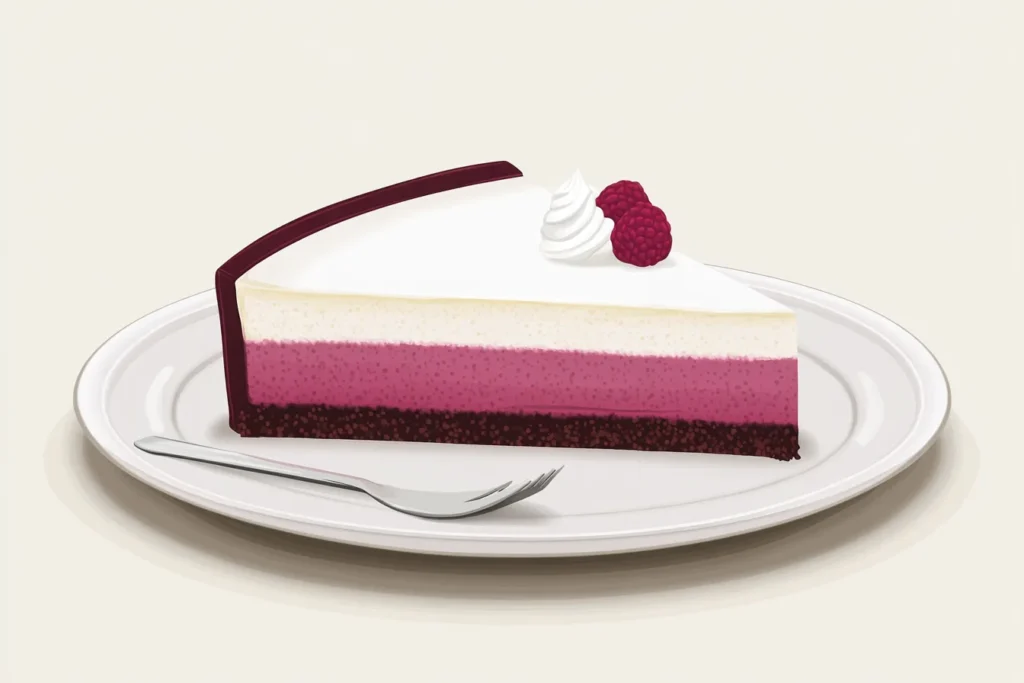
How to Store and Freeze Cheesecake Properly
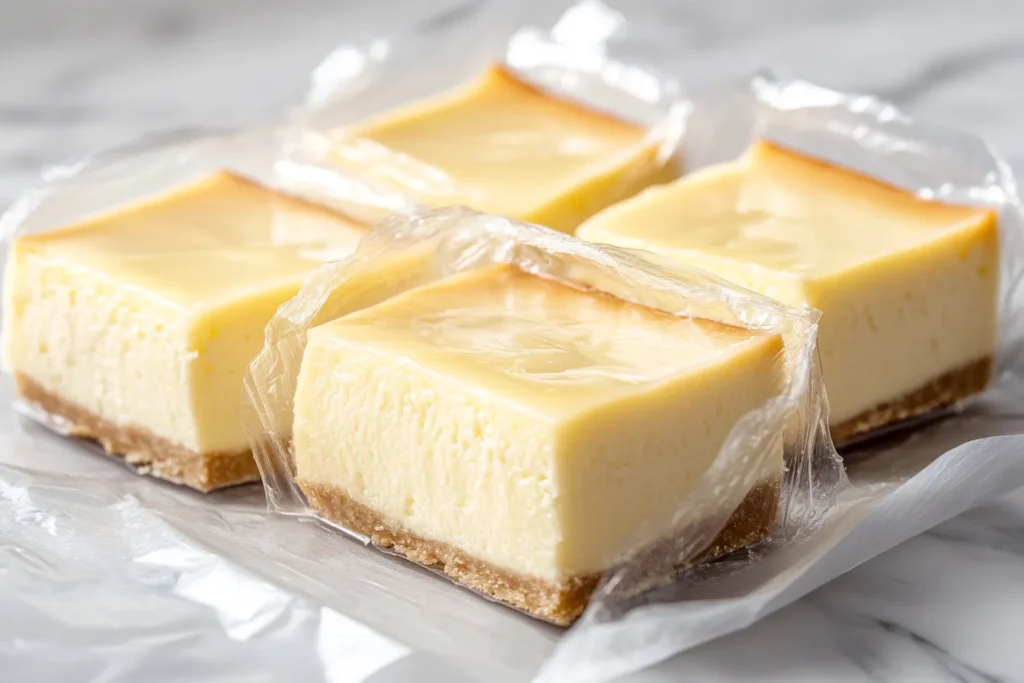
Best Way to Store in the Fridge
After your cheesecake has chilled and set, cover it with plastic wrap or aluminum foil and keep it refrigerated. It’ll stay fresh for up to 5 days (if it even lasts that long!). 😉
How to Freeze Cheesecake Without Ruining Texture
Want to save some for later? Freeze individual slices by wrapping them tightly in plastic wrap, then placing them in a freezer-safe bag. Thaw overnight in the fridge when you’re ready to enjoy!
« One cheesecake now, a hidden cheesecake later—future you will be so grateful. » ❄️🍰
Cheesecake FAQs
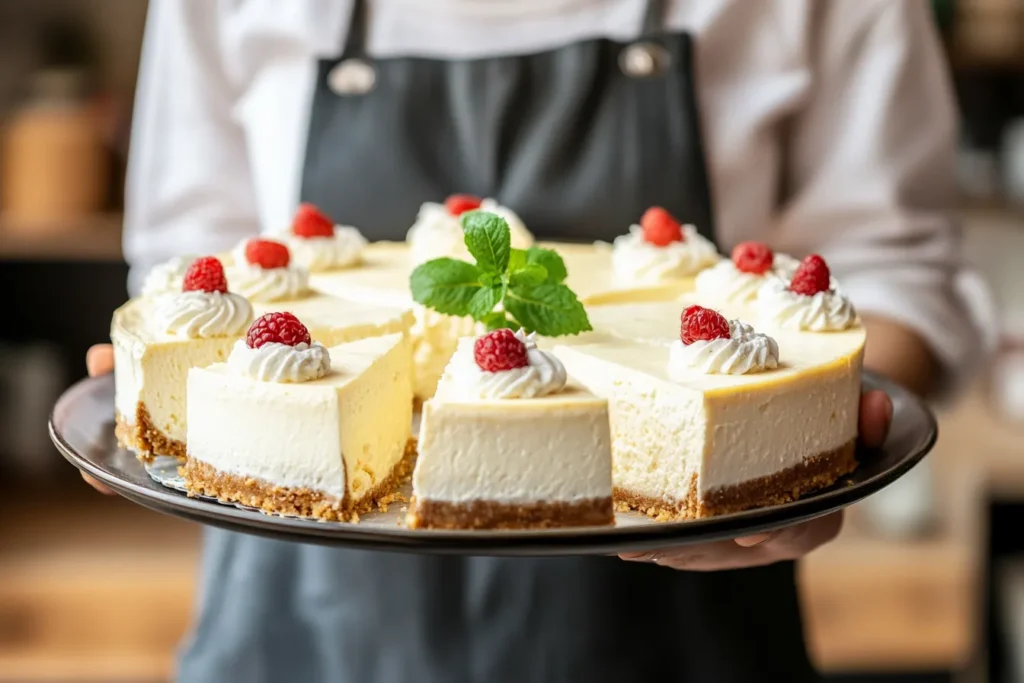
Can I Make Cheesecake Ahead of Time?
Absolutely! In fact, cheesecake tastes even better after chilling overnight. It gives the flavors time to deepen and the texture to firm up. Perfect for party planning!
How Long Does Cheesecake Last?
In the fridge, properly stored cheesecake can last up to 5 days. In the freezer, it can last up to 2 months without losing much quality!
Final Thoughts: Cheesecake, Your New Best Friend
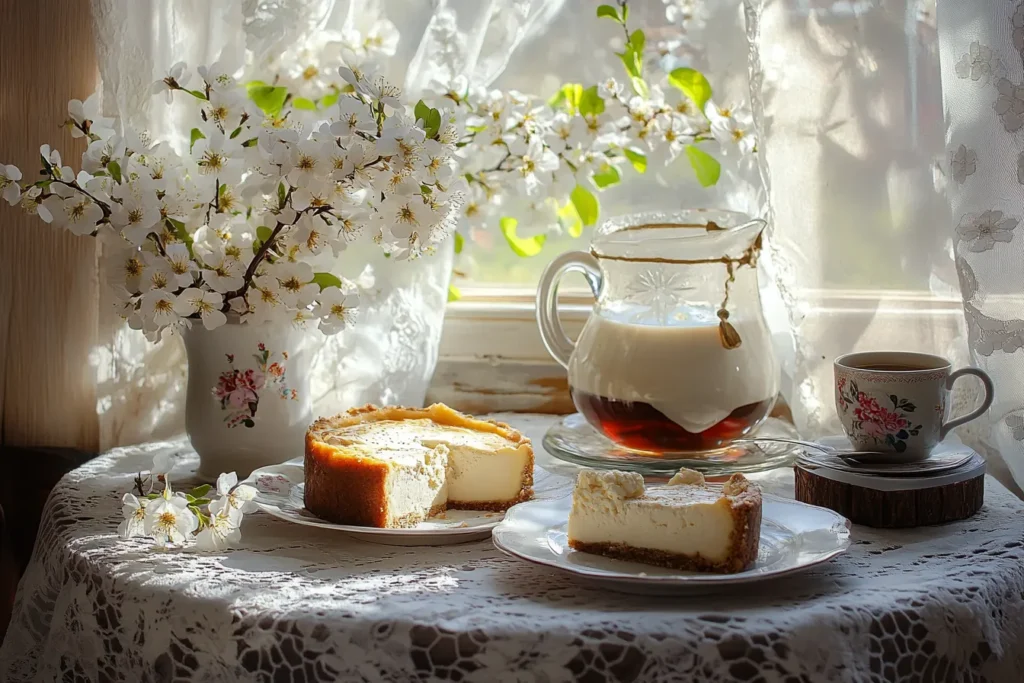
Cheesecake isn’t just a dessert — it’s an experience. From the buttery crust to the creamy center to the endless topping options, there’s something magical about creating your own masterpiece at home. 🍰💛
So next time you want to treat yourself (or impress someone special), remember: with a few simple steps, a little patience, and a lot of love, you can make the perfect cheesecake. Happy baking!
« Life’s short—eat the cheesecake. » 🧡
